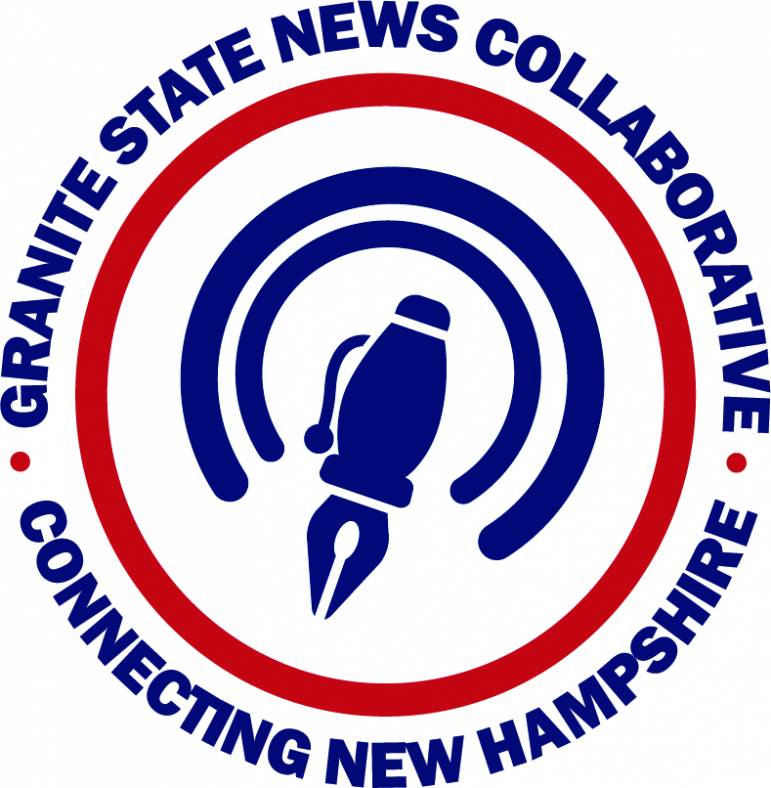Listen to the full interview on The Granite Beat podcast above and subscribe wherever you get your podcasts

As financial pressures push news outlets to take a hard look at their payroll, alternative funding sources have come into play as a way to bolster reporting positions. At The Keene Sentinel, Olivia Belanger holds one of those positions. She leads the paper’s Health Lab, and she said the position doesn’t just add another position, it allows whoever holds that position to do a different kind of work.
The content below has been edited for length and clarity – listen to the podcast above for the full story.

Adam Drapcho: Could you tell us about the Keene Health Lab? How is it funded and structured? How is it different or similar to a conventional newsroom health desk?
Olivia Belanger: I have been the health reporter for The Sentinel since August of 2019. Around last fall, myself and the president and CEO of The Sentinel sat down and wanted to start a new project with a different funding model because although we’re doing really well at the Sentinel and we continue to grow, there’s always opportunities to find different avenues and different ways to make ourselves better. We had this idea to create a lab where we can play around and figure out the best ways to structure a beat. Health is something that affects everybody, that’s why we decided on the Health Beat. I was also the most senior reporter at the time, so it just made sense. In February of this year, we launched the lab and it’s a completely donor-funded model. Instead of me being paid through ad revenue and other revenue sources in a traditional newspaper sense, it’s people who are just donating money to us. It’s businesses, it’s grant money, it’s a bunch of different things, which gives us a lot more wiggle room in terms of my salary, the things that I can pay for, I could have a little bit of a travel budget. I went this May to a summit for Solutions Journalism over in Utah that was paid for through this donor model. Opportunities that I wouldn’t have gotten if we stuck with the traditional structure.
Beyond that, I’m no longer doing the Daily Health story anymore, so I don’t have to come up with that daily quota. Now I’m able to take a month or two months to interview 20 people about one topic I find interesting that I think would be helpful for the region rather than just saying, ‘well I need a story for tomorrow, so I better call the person that I know will answer the phone at 3 p.m. because my other story fell through.’ On top of that, I’m doing a weekly newsletter on health and that’s been really interesting and fun for me to use my own voice and have people get to know me and some of the things that I’ve struggled with, whether it’s mental health or finding a primary care provider or any of these things. Peeling back that curtain in a way that shows people who I am a little bit more, but still draws that line between journalist and person.
Adam Drapcho: Let’s take some recent work that you’ve done as an example to see how this works. You recently published a story about the direct primary care model. Could you tell us what that is, then how you came to know about this as a possible story idea, why you decided that it was worthy of an investigation, and then what you learned through the course of that investigation?
Olivia Belanger: Because technically my title now is Health Solutions Reporter, all of them are trying to have some sort of solutions journalism lens, which for folks who don’t know, rather than just saying we have a problem, it’s saying here’s somebody who’s trying to fix the problem. Direct primary care is one thing that I had heard about a couple of times. Basically the idea is that rather than going through an insurance company, you pay a doctor a monthly fee for your primary care needs, and then you can go see that doctor as many times as you want within that given month; you have more direct access to your provider. There’s pros and cons to that, which I can get into. The idea came from it because I had written about two facilities locally that offered that care, but I really hadn’t scratched the surface there.
It was just these exist and these are a model for you, but we know that we have a primary care physician shortage. We know that what we have to offer for health in the Monadnock region isn’t great. It’s hard to find a provider that you know you like and enjoy, nevermind just finding one in the first place. I decided to take a month or so to talk with not only the ones that are local here who are doing the direct primary care, but also ones across the state and ones across the country. There’s one person that I spoke to who has been doing that over in Michigan, and she has had a lot of luck with getting a lot of patients there. They’re actually expanding further into the Midwest, which is huge.
The benefit of Direct Primary Care is you do get that direct access, you get better patient experiences, but at the same time if you can’t afford that monthly fee, there’s nothing really that you can do about that. It ranges from about $35 to $150 I found in New Hampshire. For some folks that might be doable and totally affordable, but for other people, myself included, that’s something that I could never swing. It’s one solution for a good chunk of the population, but for some folks it’s still not manageable. I really dove into that and tried to explain as best as I could, here is what this model is and here’s how you could sign up for it if you’re interested, but here are also some of the setbacks there and why it’s not a perfect solution at this point for primary care.
Adam Drapcho: Do you think it’s a model that we’ll see more of? What do you think the emergence of direct Primary care tells us about the more conventional care arrangement?
Olivia Belanger: I think that we can tell from this and from just other aspects of the health landscape that we know today people are really frustrated. Whether they have a primary care provider that they’ve had for a long time and don’t feel like they’re getting enough out of those visits, or they can’t even find one and don’t know where to turn because every option they try, either that person leaves after one visit or just doesn’t feel satisfied with the level of care they got. I know for a lot of folks who are on the younger side or the healthier side, they’ve just given up on primary care completely because they can’t find anybody that’s worth their time or they can’t afford the copay, or don’t have insurance, whatever the issue is.
I think that we’ll see more direct primary care opening up. I think that we’ll see more independent practices in general opening up in New Hampshire. I don’t think it’s a secret that we have Dartmouth Health that owns a ton of health offices, we have Concord Hospital over in the Concord area that owns a lot of hospitals and health options. I think that people are gravitating more toward that family-owned practice or that independent practice just to get more of that human experience that we are craving in every setting, especially after the pandemic.
Julie Hart: What’s it been like working in a philanthropically-funded newsroom? Do you still have editorial control? How much input do you get from your funders? How much or little does that change your daily process?
Olivia Belanger: I haven’t noticed any change at all, which has been really great and we’ve been really open and honest. I haven’t been doing the funding part of it, that’s been our president, but when he is having conversations with potential donors, he’s making it very clear that they’re not going to have any sort of editorial control over the content, similar to what we would do with ads. Something that we’ve been doing for years and years where just because you put an ad in the paper doesn’t mean we’re going to sway one way or the other. People have been really understanding of that. As far as I know, we haven’t added any pushback.

This article is part of The Granite Beat, a project by The Laconia Daily Sun and The Granite State News Collaborative, of which Laconia is a partner. Each week Adam Drapcho and Julie Hart, will explore with local reporters how they got some of the most impactful stories in our state and why they matter. This project is being shared with partners in The Granite State News Collaborative.
